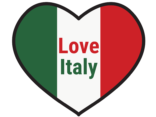
Ordering coffee in Italy involves understanding the country’s coffee culture and knowing the specific terms used in Italian coffee shops, or “caffetterias”. How do I order coffee in Italy? It’s not as simple as just asking for a coffee, as there are various types of coffee drinks, each with its own name. From ordering an “Espresso” for a quick caffeine fix, to enjoying a “Cappuccino” for a leisurely breakfast, the process can be quite different from what you’re used to in your home country. It’s also important to know the etiquette, such as when to drink certain types of coffee and how to pay.
Mastering the Art of Ordering Coffee in Italy: A Comprehensive Guide
Mastering the art of ordering coffee in Italy can be a delightful experience, steeped in tradition and local customs. It’s not just about getting your caffeine fix; it’s about immersing yourself in the Italian culture, understanding the nuances, and appreciating the ritual of coffee drinking.
Firstly, it’s important to understand that coffee in Italy is more than just a beverage; it’s a way of life. Italians typically start their day with a cappuccino, enjoyed at the bar counter, often accompanied by a pastry. Unlike in many other countries, cappuccinos are considered a breakfast drink and are rarely ordered after 11 am. If you’re craving a milky coffee later in the day, opt for a ‘caffè latte’ or ‘latte macchiato’.
When ordering coffee in Italy, it’s essential to know the lingo. ‘Caffè’ is the term used for a regular espresso shot, the default coffee in Italy. If you prefer a weaker version, ask for a ‘caffè lungo’, which is an espresso with a little more water. For a stronger kick, a ‘caffè ristretto’, a concentrated espresso, is the way to go. If you prefer your coffee with a dash of milk, ‘caffè macchiato’ is an espresso with a spot of milk.
It’s also worth noting that coffee in Italy is typically consumed quickly, often standing at the bar counter. This is not only a cultural norm but also a cost-saving measure. Coffee consumed ‘al banco’ (at the bar) is cheaper than if you were to sit at a table, where service charges apply.
Another important aspect to consider is the time of day. While there are no hard and fast rules, there are certain unspoken guidelines. As mentioned earlier, milky coffees like cappuccinos are typically morning affairs. After a meal, Italians usually opt for a ‘caffè’, a simple espresso, to aid digestion.
If you’re visiting in the warmer months and fancy a cold coffee, ‘caffè shakerato’ is a popular choice. It’s an iced coffee drink, where espresso is shaken with ice and sugar, resulting in a frothy, refreshing beverage.
For those with a sweet tooth, ‘caffè corretto’ is an interesting option. It’s an espresso ‘corrected’ with a shot of liquor, usually grappa, sambuca or brandy. It’s not a typical morning drink but is often enjoyed after dinner.
Lastly, don’t forget to pay for your coffee. In many Italian cafes, you’re expected to pay first at the cash register, where you’ll receive a receipt to present at the bar. This might seem unusual to some, but it’s a common practice in Italy.
In conclusion, ordering coffee in Italy is an art form that goes beyond the simple act of quenching your thirst or getting a caffeine boost. It’s about understanding and respecting the Italian coffee culture, knowing the right terms, and following the unspoken rules. So, the next time you find yourself in an Italian café, remember these tips and enjoy your coffee, the Italian way.
Conclusion
In conclusion, ordering coffee in Italy involves understanding the different types of Italian coffees, knowing the appropriate time to order certain types, and being aware of the local coffee culture. It’s also important to remember that coffee is typically consumed at the bar counter and paid for before consumption.
Secure Your Dream Italian Experience Before It’s Gone!
Planning a trip to Italy? Don’t let sold-out tours or overcrowded attractions spoil your adventure. Unmissable experiences like exploring the Colosseum, gliding through Venice on a gondola, or marvelling at the Sistine Chapel often book up fast—especially during peak travel seasons.

Booking in advance guarantees your place and ensures you can fully immerse yourself in the rich culture and breathtaking scenery without stress or disappointment. You’ll also free up time to explore Italy's hidden gems and savour those authentic moments that make your trip truly special.
Make the most of your journey—start planning today and secure those must-do experiences before they’re gone!
